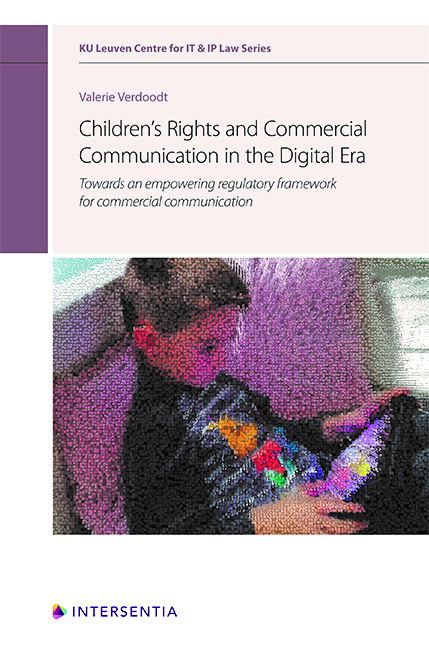 Children's Rights and Commercial Communication in the Digital Era
Children's Rights and Commercial Communication in the Digital Era Book contents
- Frontmatter
- Preface
- Contents
- Abbreviations
- Introduction
- PART I CHILDREN'S RIGHTS AND ADVERTISING LITERACY IN THE DIGITAL ERA
- PART II ASSESSMENT OF THE REGULATORY FRAMEWORK FOR COMMERCIAL COMMUNICATION IN LIGHT OF CHILDREN'S RIGHTS
- PART III ASSESSMENT OF NATIONAL ARIS IN THE AREA OF COMMERCIAL COMMUNICATION
- CONCLUDING REMARKS AND RECOMMENDATIONS FOR THE FUTURE
- Bibliography
- Miscellaneous Endmatter
Conclusion - Best Practices for the Structuring of ARIs in the Area of Commercial Communication
Published online by Cambridge University Press: 23 July 2020
- Frontmatter
- Preface
- Contents
- Abbreviations
- Introduction
- PART I CHILDREN'S RIGHTS AND ADVERTISING LITERACY IN THE DIGITAL ERA
- PART II ASSESSMENT OF THE REGULATORY FRAMEWORK FOR COMMERCIAL COMMUNICATION IN LIGHT OF CHILDREN'S RIGHTS
- PART III ASSESSMENT OF NATIONAL ARIS IN THE AREA OF COMMERCIAL COMMUNICATION
- CONCLUDING REMARKS AND RECOMMENDATIONS FOR THE FUTURE
- Bibliography
- Miscellaneous Endmatter
Summary
ARIs AND THE BROADER LEGAL FRAMEWORK. The first chapter of this final part of the research explored the interplay between ARIs and the broader legal framework. It was concluded that the advertising industry has important responsibilities to respect and promote children’s rights throughout their advertising and marketing practices. Relatedly, the EU legislative framework indirectly encourages them to develop advertising self-regulation, in light of children’s rights. In this regard, several requirements for the structuring and development of advertising ARIs were distilled. First, it was concluded that children’s procedural rights require that an ARI adheres to a number of procedural safeguards, such as impartiality, independence and transparency. Second, a number of general benchmarks at the EU level, which provide input for the best practices were analysed. Finally, the analysis explored how the advertising industry has developed its own benchmarks for advertising self-regulation.
COMPARATIVE ASSESSMENT. The second chapter of this part of the research examined three national ARIs in the area of commercial communication. On the basis of this comparison and the requirements and benchmarks found in the first chapter, a number of best practices for ARIs in the area of commercial communication can be extracted:
1. Proactive monitoring of advertisements online
A first best practice relates to the specific characteristics of commercial communication. More specifically, as illustrated, consumers (and especially children) have difficulties recognising the sophisticated and immersive advertising techniques that are being used in the digital environment. It was argued that this could be a reason for the low amount of consumer complaints concerning new advertising techniques and children. Accordingly, from the analysis of the monitoring and oversight mechanisms of the three ARIs, it was concluded that some form of proactive monitoring of advertisements online by the alternative regulatory body, which has the competence to launch investigations, is to be preferred over a purely complaint-based system.
2. Formal cooperation between alternative regulatory bodies and governmental Agencies
A second best practice relates to the most frequent criticisms of a purely self-regulatory approach in academic scholarship, namely the lack of effective enforcement. From the comparative study, it was concluded that having some form of government involvement is recommended to obtain stronger enforcement.
- Type
- Chapter
- Information
- Children's Rights and Commercial Communication in the Digital EraTowards an Empowering Regulatory Framework for Commercial Communication, pp. 283 - 286Publisher: IntersentiaPrint publication year: 2020


